
DIGITAL
PRIMARY 5 Globalaction Physical Education
PROJECT INCLUDED
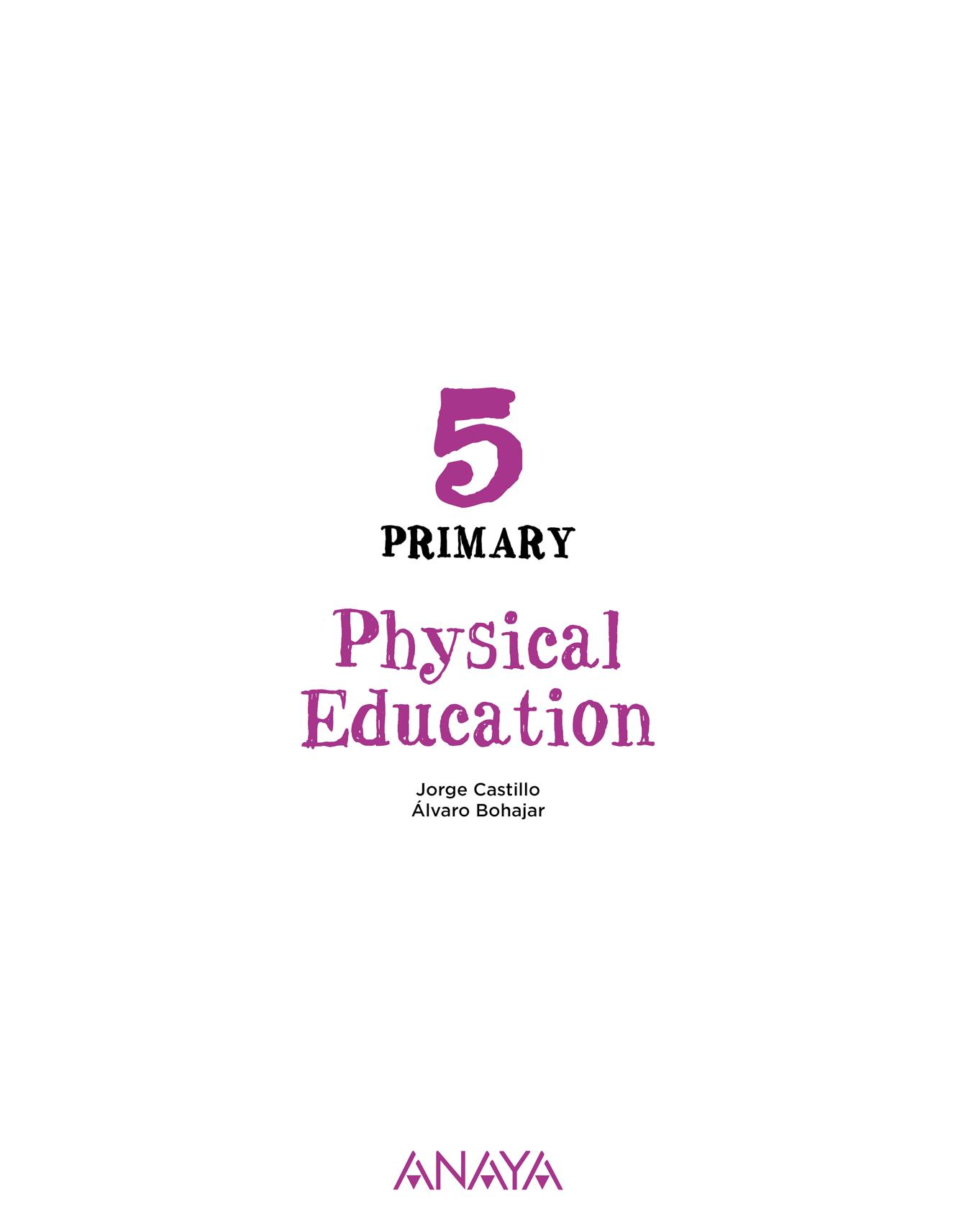
What will you learn?
LEARNING SITUATION TARGET IN ACTION SDG


PAGE.
Faster, higher, stronger
Encourage partnership and cooperation by designing a new campaign for the next Olympic Games.



Put yourself in my shoes
Recognise the differences and similarities between people. Think about them as a great value.
FAIR PLAY: WHY DO SPORT? WOULD YOU LIKE TO BE A REFEREE? FOLLOW THESE STEPS.
1 3 5
2 4 6
Eat well, eat healthy
Think about dancing as a way of expressing our feelings and then, create an emotional dance.
Have a healthy lifestyle and promote well-being by organising the menu of the week.

FAIR PLAY:THE ADVANTAGES OF USING PUBLIC TRANSPORT. ALWAYS PAY ATTENTION TO POLICE OFFICERS
A universal language Autobiography
Double the effort in preserving the environment by organising a campaign to reuse toys.
Role model
Think about inequality between men and women in sports creating an article about a professional sports woman.
FAIR PLAY: WARMING UP. WHAT IS A STITCH? WHAT ARE STIFF MUSCLES?
Good health and well-being Quality education Responsible consumption and production Sustainable cities and communities Peace, justice and strong institutions Reduced inequlaties
6 28 50 16 38 60
• Muscles, bones and joints
• The muscles
• Positive attitude
• Our gestures
• Basic physical abilities
• Rules in sport
LEARNING PLAY ZONE
• Puppet
• Missing body
• Let me show you
• Crazy gestures
• 21 st century noughts and crosses
• Rounders
• Racing, jumping and throwing
• Types of jumps
• Types of laterality
• Creative people
• Strength and flexibility
• Individual and team sports
• Body language
• The first dances
• The ability to balance
• Propulsion and sliding
• Good posture
• Traditional games
• The characteristics of a diet
• A balanced diet
• Types of coordination
• Simple and complex jumps
• The characteristics of impersonation
• Cooperation and opposition
• Orienteering race
• The preservation of the environment
• Self-esteem
• Spinning and rolling
• Spontaneity
• Warming up and cooling down
• The importance of equality
• Types of throw
• Body language
• Express yourself!
• With your legs and feet
• Sport rules
• Pass the baton
• Four Olympian seasons
• Use your other side!
• Today I’m going to be...
• Impossible figures
• As far as possible
• Let’s dance!
• Create your own beat
• Homeless crab
• The flying mat
• Don’t drop the ball
• Petanque
• Find the pairs
• Choose your path
• Ultimate
• Beat that!
• Who am I?
• Poison ball
• The hidden track
• Get to the right place
• Topsy-turvy world
• Countdown
• Show your worth
• Chain
• Attack the tower
• Dodgeball
• Countdown
• Flying high
• You decide
• Floorball
2 Put yourself in my shoes
An

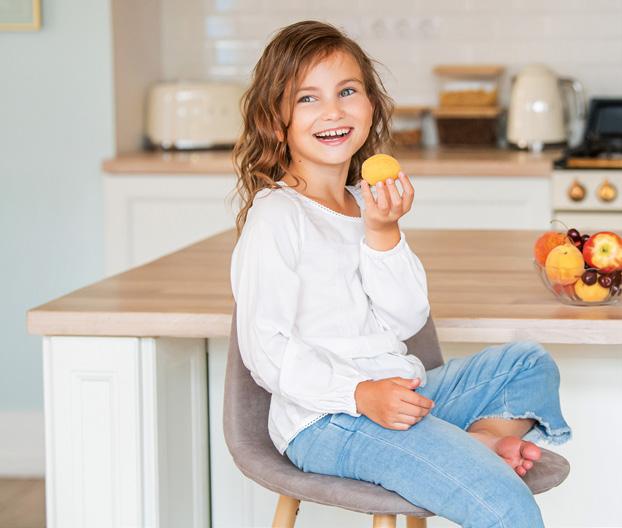
What do you think?
With which side are you more skilled? Does being right-handed or left-handed make you different?






The facts
Equality means that all of us have the same rights, no matter our individual characteristics.

Plan of action

To recognise the differences and similarities among people and to think about them as a great value.








You

23 22 U2 Strength and flexibility Individual and team sports Strength is the ability to overcome resistance or oppose an external load using the force of your muscles. Flexibility is the ability to move your joints as far as they will go. You can classify sports in different ways. For example, depending on the number of participants. You do some sports individually and others as a team. Sometimes you play against opponents and sometimes you take it in turns to compete. 6 Look at the pictures and write stamina, speed, strength or flexibility in your notebook. 7 Read the sentences. In your notebook, write T if a statement is true and F if it is false. a) A few years ago was stronger and less flexible. b) People can get better at sport every day, without doing any training. c) Someone who is flexible can put their leg behind their head. d) Physical abilities help me improve my health and well-being. e) To be more flexible, have to develop my muscles. 8 Read the example. Then, copy the table in your notebook and classify the following sports. Individual sport Team sport Opponent Take it in turns Kin Ball Basketball ? ? ? Athletics ? ? ? Ultimate ? ? ? Judo ? ? ? Badminton ? ? ? 9 Think of an individual sport you take in turns. Draw it in your notebook. Then, explain to the class how you play it. a b c d Impossible figures As far as possible PLAY ZONE PLAY ZONE ¡¡ ¡¡ Your age, training and diet influence the development of your basic physical abilities. You can do sport individually, play against an opponent or take it in turns to complete. More at anayaeducacion.es You will play games Competency-based activities
you learning
In each unit there is a learning situation and a final plan of action.
21 20 U2 4 Imagine situation where you have to express yourself without talking; you can only use your body. Write it in your notebook. Then, act it out for the class. Can they guess what you are doing? Look at the example. 5 Which was easier? Acting out your situation or guessing other people’s? Write your answer in your notebook. Explain it. Types of laterality Creative people Laterality is when you have greater control over one side of your body (left or right) than the other. There are right-handed people, left-handed people, ambidextrous people and forced right-handers. Ambidextrous people can use both hands equally well. For example, they may use their right hand to eat and their left hand to write. Forced or false right-handers are naturally left-handed, but do not use their left side for various reasons. It may be because they want to imitate right-handed people. It may also be because of an injury or because they were forced to use their right side when they were young. 3 Use the colour code to colour in the drawing. Then, answer the questions. Side you use Side you don’t use a) Which side did you colour? b) Was it always the same? Creativity is the ability to generate new ideas and concepts to solve problems. Creative and spontaneous people find it easier to express themselves using their bodies and act out different actions. Use your bad side! Today I’m going to be... PLAY ZONE PLAY ZONE ¡¡ ¡¡ Did you know that if you are left-handed, you use the right side of your brain more? If you are right-handed, you use the left side more. Look through a microscope. Talk on the telephone. Write. Kick a ball. Get creative! It’s all in your head. Y TALKING?
Why are
this?
All about your book
4
You will gain general knowledge in the learning situation.
will work on your skills
16 10 17
Key concepts
ambidextrous
use either hand with the same skill.
person can
And in every term...







Fair play

Plan of action
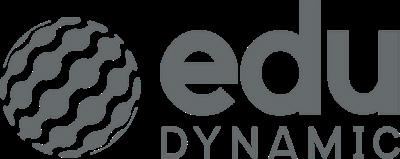









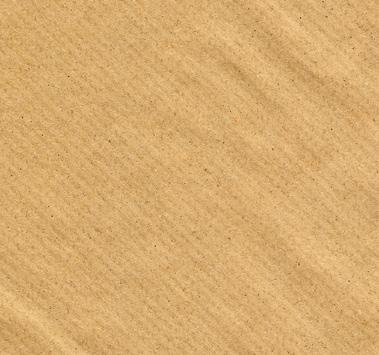
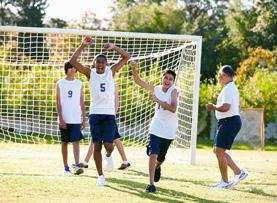
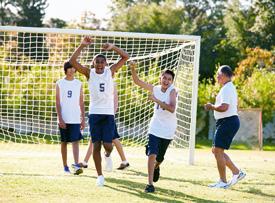
Self-esteem

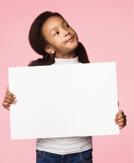

27 Fair play Why do sport? Why should you do sport? What benefits and advantages does it have? Strength, stamina, speed and flexibility are basic physical abilities. Everyone has them. If you train, you will develop these abilities in a balanced way. This will help you to be better at all physical activities. Do you want to be a referee? Follow these steps. Developing your basic abilitiesphysical helps keep you fit. 1. Get fit Depending on the sport you want to referee, you will have to train like the players. You will need to keep up with them to be at the right place at the right time. 2. Start from the beginning Start by learning the basic principles. This will help you play your role in your chosen sport. 3. Learn the rules Every sport has its rules. You need to know them. Apply the rules as well as you can. That’s your job. 4. Watch videos Analyse and study the controversial moves in each match. Learn from your mistakes so you don’t make them again. 5. Control your emotions Always keep calm, even when other people are angry. Be confident in your decisions. Remember, you are the referee. 6. Be a role model Set an example. You represent respect, calmness and good behaviour on the playing field. Today, many famous sportsmen and sportswomen appear in advertising campaigns. Don’t take these campaigns too seriously. Try to look beyond fashion and consumerism. Sport helps you get to know yourself better and to appreciate yourself. It teaches you to value what you have. 26 27 Fair play Why do sport? Why should you do sport? What benefits and advantages does it have? Strength, stamina, speed and flexibility are basic physical abilities. Everyone has them. If you train, you will develop these abilities in a balanced way. This will help you to be better at all physical activities. Do you want to be a referee? Follow these steps. Developing your basic abilitiesphysical helps keep you fit. 1. Get fit Depending on the sport you want to referee, you will have to train like the players. You will need to keep up with them to be at the right place at the right time. 2. Start from the beginning Start by learning the basic principles. This will help you play your role in your chosen sport. 3. Learn the rules Every sport has its rules. You need to know them. Apply the rules as well as you can. That’s your job. 4. Watch videos Analyse and study the controversial moves in each match. Learn from your mistakes so you don’t make them again. 5. Control your emotions Always keep calm, even when other people are angry. Be confident in your decisions. Remember, you are the referee. 6. Be a role model Set an example. You represent respect, calmness and good behaviour on the playing field. Values in sport Today, many famous sportsmen and sportswomen appear in advertising campaigns. Don’t take these campaigns too seriously. Try to look beyond fashion and consumerism. Sport helps you get to know yourself better and to appreciate yourself. It teaches you to value what you have.
25 PORTFOLIO What did I learn? 10 Complete the sentences in your notebook. a) There are three types of athletics events: and b) You pass the baton in c) 100, 200 and 400 metre sprints are events. d) A marathon is a race. 11 Crack the code to discover the question. Write the answer in your notebook. 19 20 18 5 14 7 20 8 ? 6 12 5 24 9 2 9 12 9 29 25 ? There are many ways to check what you know. What do you think of this one? Traffic lights: Colour in next to the activities. I know how to do it I need help I don’t know how to do it 23 8 20 9 19 23 8 20 9 19 U2 learn? 13 Assess your attitude in PE class. Copy the table. Write a tick ✔ in the correct box. your notebook. athletics events: and races. sprints are events. the question. Write the answer in your 7 20 8 ? 9 12 9 29 25 ? In this unit, you have learned about laterality. Now, put a ribbon in your non-dominant side and practise some of the games you know. Then, using the Now think... Before I thought... technique, think about the advantages and disadvantages that people may face according to their laterality. Do you think the world is the same for right-handed and left-handed people? Copy the table in your notebook and answer the questions. Making an effort and trying to improve Body language Getting to know your body Games and sports Basic motor skills Easy Difficult need to improve participate actively in class. ? ? ? do the activities. ? ? ? apply what I learn. ? ? ? ask for help if I don’t understand something. ? ? ? Before thought... Now I think... Causes ? ? ? There are many ways to check what you know. What do you think of this one? How did I do? to the activities. it 9 19 9 19 U1 Portfolio And a great digital project from Anaya to you: a global response to a diverse learning environment. Edudynamic is: Intuitive. Downloadable. Simple. Multi-device. Synchronisable. Universal. 9:45 AM 100% adiP
We are all different, but we are all equal. Self-esteem is how you feel about yourself. From the moment you are born, your body is always changing. It is important to learn to accept yourself as you are and to respect others. 4 Define the concepts in your own words. 5 Think of an example of each of the concepts you defined in activity 4. Write them in your notebook. Topsy-turvy world PLAY ZONE ¡¡ Diversity Tolerance Integration Icons Cooperative learning ICT Gameplay SDG Emotional learning Listening Learning to think Assessment
1 Faster, higher, stronger
Olympic rings represent the union between the five continents and the meeting of athletes around the world.
What do you think?
“There’s strength in numbers”. Do you agree?
The facts
The Olympic games’ flag represents all the countries of the world.
Target in action
Encourage partnership and cooperation by designing a new campaign for the next Olympic Games.

6


7 17
Muscles, bones and joints

You would walk like a robot without joints in your body!

Your muscles and your bones work together so your body can move.
The place where bones meet is called a joint. Joints allow you can make large and small movements.
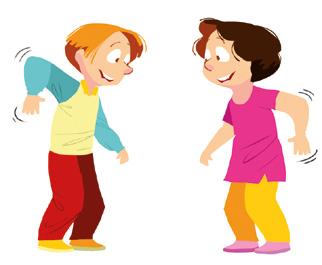

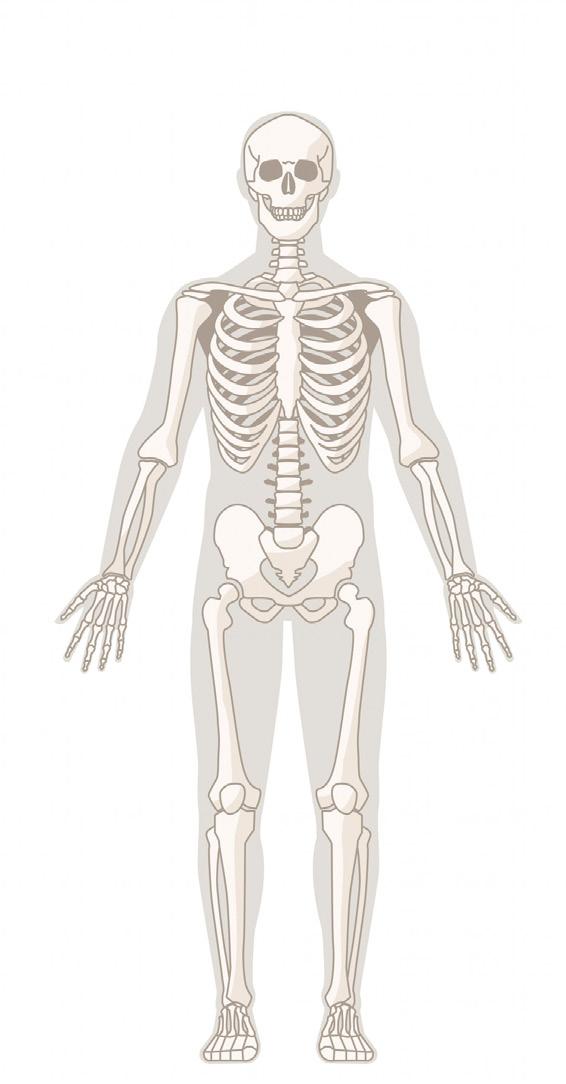
8 1 7 2 8 3 9 4 10 5 11 6 13 12
ZONE
PLAY
1 Match the numbers to the letters. Write them in your notebook.
Bones Joints Collarbone a Hip h Skull b Wrist i Radius c Shoulder j Breastbone d Ankle k Humerus e Elbow l Tibia f Knee m Femur g ¡¡ Puppets
The muscles
Did you know that 1 kg of muscle occupies less space than 1 kg of fat?


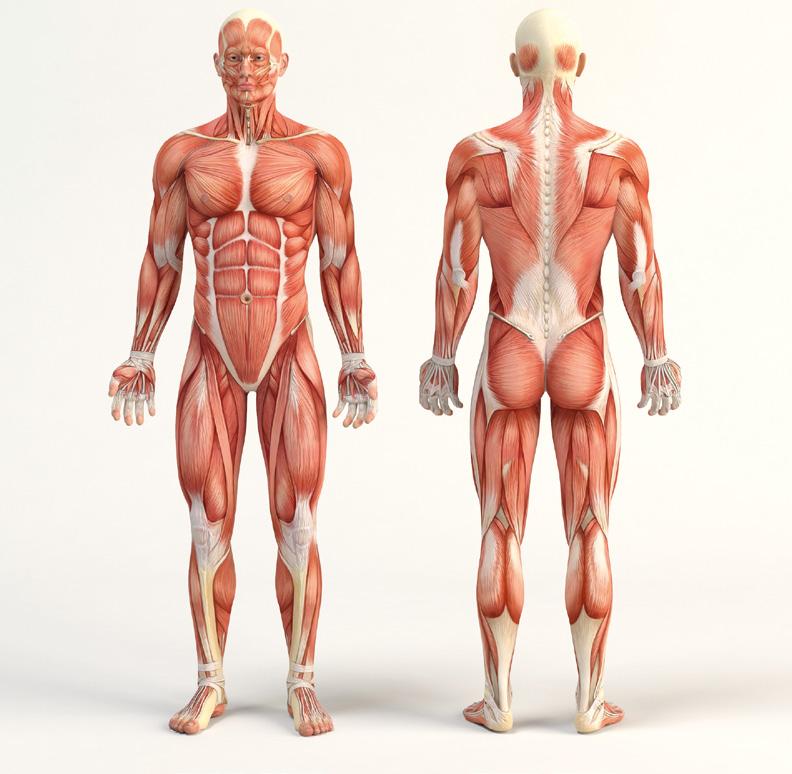
Training, diet, age and genetics affect the way your muscles develop. Muscles are made up of thousands of fibres which get bigger when you exercise.
2 Match the muscles to the numbers. Write the answers in your notebook.

9 U1
¡¡ abdominal
a quadriceps c buttocks e oblique
g trapezius
i biceps b dorsal
d calf f pectorals h triceps j 1 7 2 8 3 4 10 5 6 9
Missing body PLAY ZONE
muscles
muscles
muscles
muscles
Positive attitude
To learn a new skill you need a positive attitude. This attitude will help you keep trying to succeed.
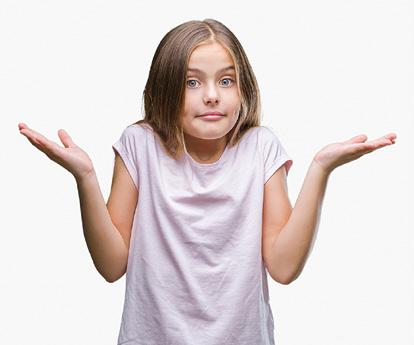



Some skills are easy, some are more difficult. We can spend hours, days, months or even years perfecting them.
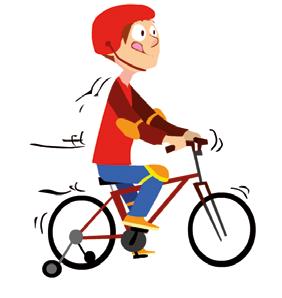


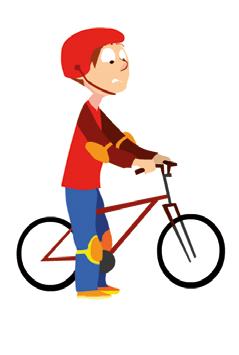
3 Look at the pictures. Put them in order.
Always be positive, never negative.
4 Read the sentences. Write positive attitude or negative attitude for each one in your notebook. How can your attitude influence the outcome of a situation?
Learn more at anayaeducacion.es

PLAY ZONE
Let me show you
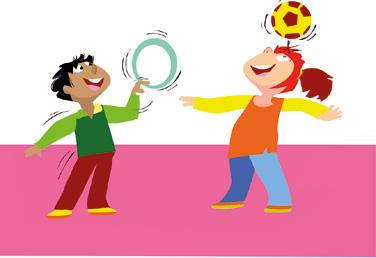
10
¡¡ a c b d
Our gestures
Gestures are very important for communication.
Your gestures are part of your non-verbal language. They let you communicate without words.

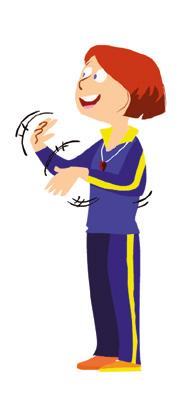
5 Look at these gestures. Answer the questions in your notebook.
a) What is the coach trying to say?
b) What is the volleyball player telling his teammates?
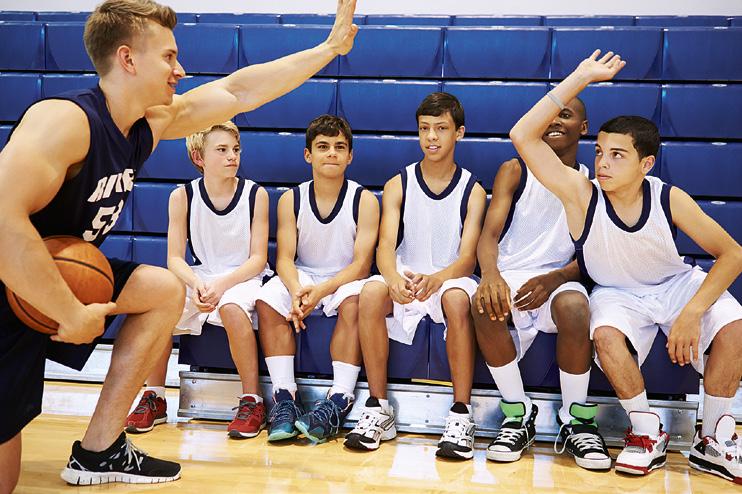
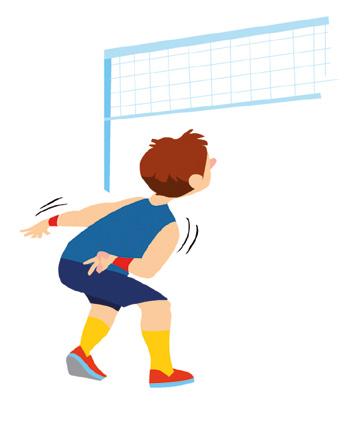
c) Why does the cyclist have his hand in the air?


6 Do you know any other hand gestures related to a sport? Describe them.
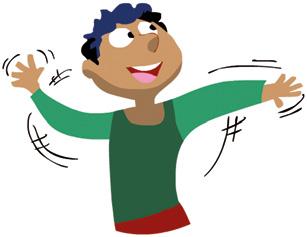
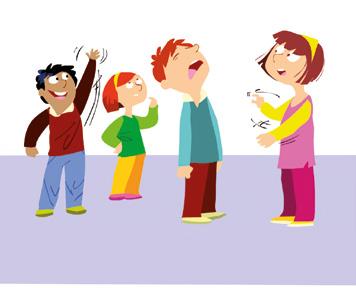

PLAY ZONE
Crazy gestures
11 U1
¡¡
Basic physical abilities
Training helps you improve your basic physical abilities.

Your basic physical abilities are vital when doing sport. These abilities are: stamina, speed, strength and flexibility.


Stamina is the ability to do a physical acitivity for as long as possible without getting tired.



Speed is the ability to do movements as quickly and intensely as possible.
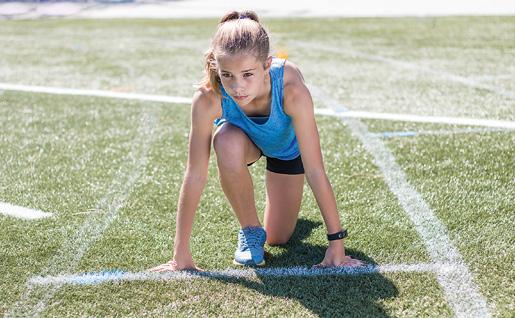
Learn more at anayaeducacion.es
8 Use the words to complete the sentences. physical related connection
positive train
21st century noughts and crosses
There is a key between the basic abilities. This means they are to each other, and you cannot one of them without having a or negative effect on the others.
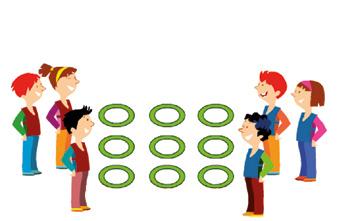
12
7 Look at the pictures and write stamina or speed in your notebook.
¡¡
PLAY ZONE
a
c
b d
Rules in sport
Games and sports have rules. In games, everyone accepts the rules but they can be changed. In sports, the rules cannot be changed.
9 Copy the table into your notebook. Put the sports into the correct columns.
volleyball
baseball
padel
cricket
football
rugby polo darts

tennis
handball

water polo golf
Competition makes games and sports more exciting.


10
rounders
petanque
table tennis
bowling
Bat and ball Invasion Target Split court
? ? ? ?
? ? ? ?
? ? ? ? ? ? ? ?

Make up a game. Write its name in your notebook. It can be an invasion, split court or target game. Now, describe how you play it.

PLAY ZONE
Rounders
13 U1
¡¡
W hat did I learn?
11 Think of three actions where you have to move these muscles and joints. Write them in your notebook.


Quadriceps and knee
Biceps and elbow
Calf muscles and ankle
12 What emotions are they expressing? Write them in your notebook.





Traffic lights: Colour in next to the activities.
I know how to do it
I need help
I don’t know how to do it
14 PORTFOLIO
a b c d
Do you want the Olympic Games in your city? Use the 6ws technique to think of a campaign to promote your city for the Olympic Games. Think of a logo and slogan.

Who (is it)? What? Where? When? Why? How?
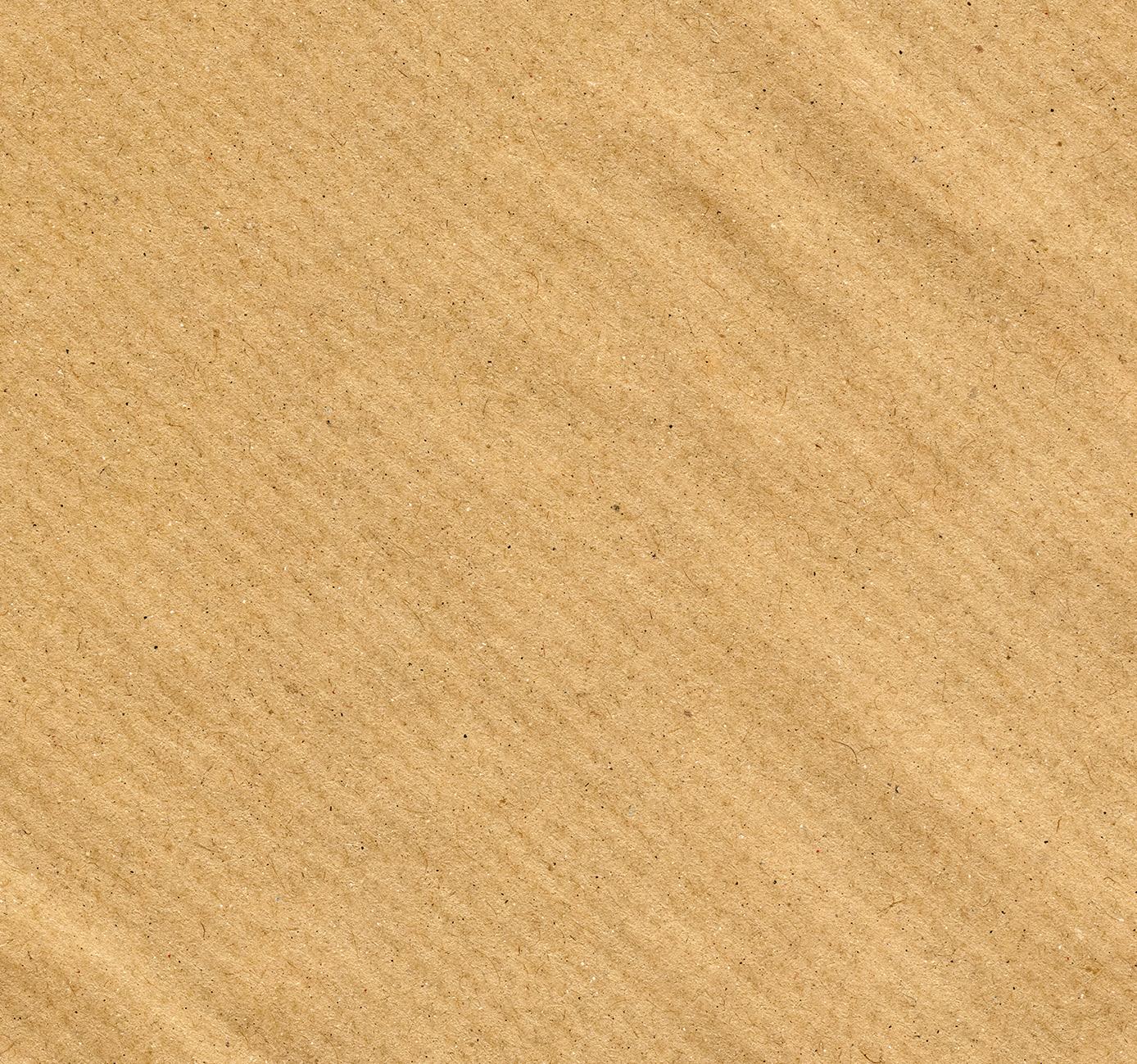
Olympic Games
Attitude in class. ? ? ?
Expressing yourself using gestures. ? ? ?

Stamina and speed. ? ? ?
Types of games and sports. ? ? ?

13 Ask a classmate to give you points from 1 to 10 for the following aspects. Write them down in your notebook. Then, answer the questions.
I participate in class. I pay attention in class. I like PE. I want to learn.
a) Do you agree with their assessment?
b) Make a commitment to do better in one of the four aspects. Write it in your notebook.
c) What did you get your highest mark in? Why do you think that is?
U1 15
2 Put yourself in my shoes
An ambidextrous person has the same ability with their right hand and left hand.
What do you think?
Which hand do you use? Does being right-handed or left-handed make you different?

The facts
Equality means that everyone has the same rights.
Target in action
Recognise the differences and similarities between people. Think about them as a great value.
16


10 17
Racing, jumping and throwing
Athletics is a competitive sport. You can do it individually or in groups. There are three main groups of events:
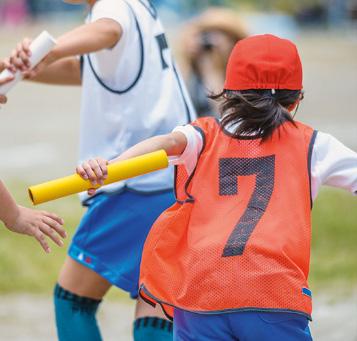


Racing: sprints, middle and long distance events, hurdles, steeplechase, relay and race walking.

Jumping: high jump, long jump, triple jump and pole vaulting.
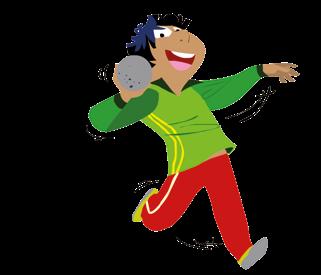
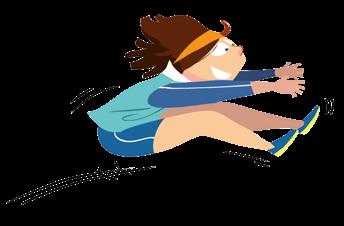
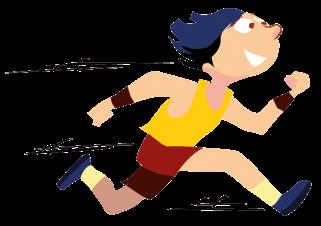
Throwing: shot put, discus throw, hammer throw and javelin.

1 Look at the pictures. What type of race are they running? Write the answers in your notebook.
PLAY ZONE
Pass the baton
18
¡¡
a b c Four!
Types of jumps
2 Look at the pictures. Then, answer the questions in your notebook.

In long jump what do the athletes land in?
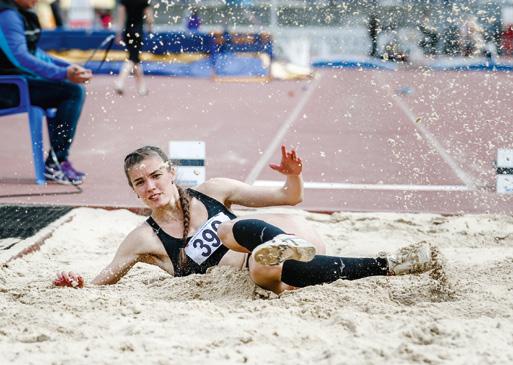
In pole-vaulting, is the pole rigid or flexible? When do athletes let go of it?



PLAY ZONE
Four Olympic seasons

In high jump, what do the athletes jump over?

19 U2
¡¡
a c d b
Types of laterality
Did you know that if you are left-handed, you use the right side of your brain more? If you are right-handed, you use the left side more.
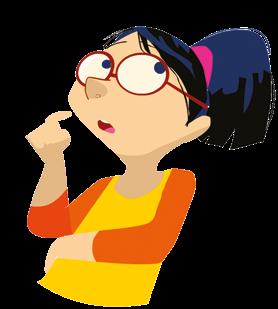
Laterality is when you have greater control over one side of your body This is your dominant side. The other is your non-dominant side.
Ambidextrous people can use both hands equally well. Forced right-handers are naturally left-handed, but do not use their left side. It may also be because of an injury or because they were forced to use their right side when they were young.

3 Use the colour code to colour in the drawing. Then, answer the questions.


Side you use Side you don’t use
Write. Kick a ball.
Look through a microscope.
Talk on the telephone.
PLAY ZONE
Use your other side!
a) Which side did you colour?
b) Was it always the same?
20
¡¡
Creative people
Your head is full of ideas! Be creative!
Creativity is the ability to think of new ideas and concepts to solve problems.
Creative and spontaneous people find it easier to express themselves using their bodies and act out different actions.
4 Imagine a situation where you have to express yourself without talking; you can only use your body. Write it in your notebook. Then, act it out for the class. Can they guess what you are doing? Look at the example.

YOU ARE AT THE CINEMA. YOU HAVE TO BE QUIET BUT YOU WANT MORE POPCORN. HOW WOULD YOU TELL YOUR FRIEND WITHOUT TALKING?
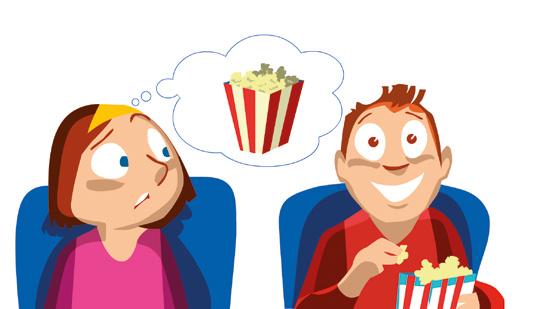


5 Which was easier? Acting out your situation or guessing other people’s? Write your answer in your notebook. Explain why.

Today I’m going to be... PLAY

21 U2
¡¡
ZONE
Strength and flexibility
Your age, training and diet influence the development of your basic physical abilities.
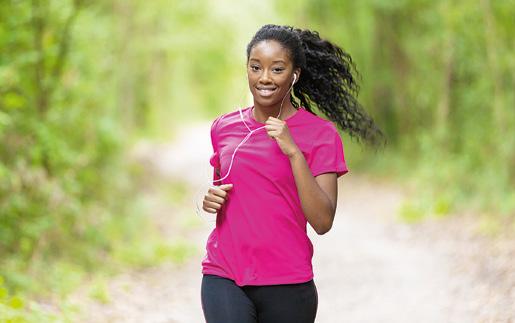

Strength is the ability to overcome resistance, move or lift objects using your muscles.

Flexibility is the ability to move your joints as far as they will go.
a) A few years ago I was stronger and less flexible.
b) People can get better at sport every day, without doing any training.
c) Someone who is flexible can put their leg behind their head.
d) Physical abilities help me improve my health and well-being.

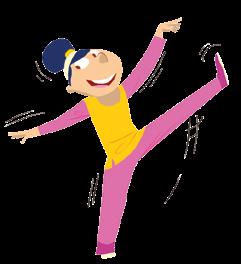




e) To be more flexible, I have to develop my muscles.
Learn more at anayaeducacion.es
PLAY ZONE
Impossible figures
22
6 Look at the pictures and write stamina, speed, strength or flexibility in your notebook.
7 Read the sentences. In your notebook, write T if a statement is true and F if it is false.
b
d
a
c
¡¡
Individual and team sports
You can do sport individually, play against an opponent or take it in turns to complete.
You can classify sports depending on the number of participants. You do some sports individually and others as a team. Sometimes you play against opponents and sometimes you take it in turns to compete.
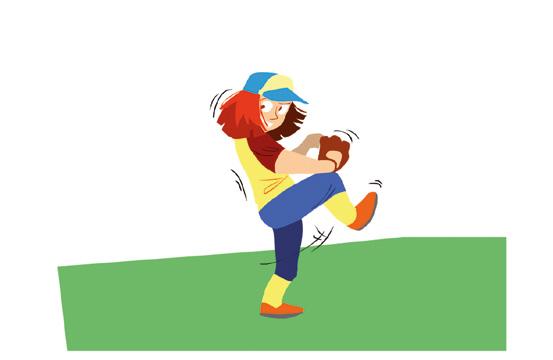
8 Read the example. Then, copy the table in your notebook and classify the following sports.
Individual sport Team sport Opponent Take it in turns

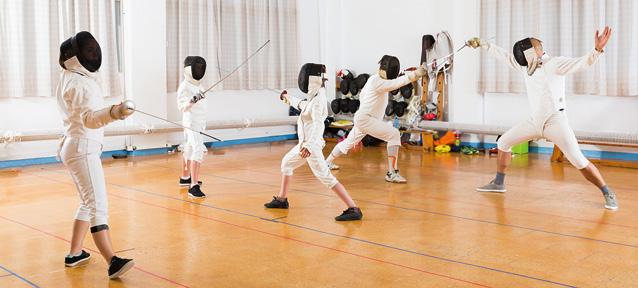
Kin Ball ✓ ✓ ✓
Basketball ? ? ? ?
Athletics ? ? ? ?


Ultimate ? ? ? ?
Judo ? ? ? ?
Badminton ? ? ? ?
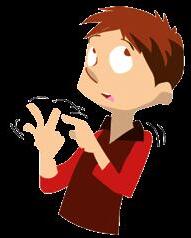
9 Think of an individual sport you take in turns. Draw it in your notebook. Then, explain to the class how you play it.
PLAY ZONE
As far as possible
23 U2
¡¡
W hat did I learn?
10 Complete the sentences in your notebook.

a) There are three types of athletics events: .... .... and ....
b) You pass the baton in .... races.
c) 100, 200 and 400 metre sprints are .... events.

d) A marathon is a .... race.
11 Crack the code to discover the question. Write the answer in your notebook. 19
There are many ways to check what you know. What do you think of this one?
Traffic lights: Colour in next to the activities.
I know how to do it
I need help
I don’t know how to do it
24 PORTFOLIO
20 18 5 14 7 20
6 12 5 24 9 2 9 12 9
8 ?
29 25 ?
23 8 1 20 9 19 23 8 1 20 9 19
13

In this unit, you have learned about laterality. Try using your non-dominant side to play a game. How did you do? Then, using the Now I think... Before I thought... technique, What things are more difficult if you are left-handed or right-handed. What things are easier? Think about actions, objects, sports and games.
Do you think the world is the same for right-handed and left-handed people? Copy the table in your notebook and answer the questions. Making
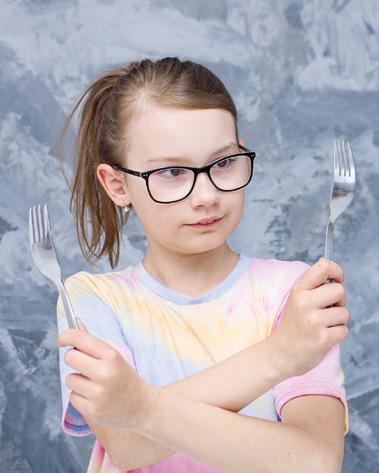
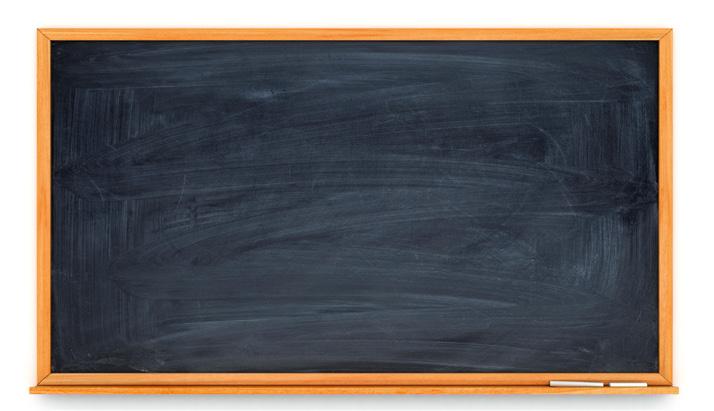
Before I thought... Now I think... Causes ? ? ?
Assess your attitude in PE class. Copy the table. Write a tick ✔ in the correct box.
I do the activities. ? ? ?
I apply what I learn. ? ? ?
I ask for help if I don’t understand something. ? ? ?


U2 25
an effort and trying to improve
language
to know your body Games and sports Basic motor skills
Difficult I need to improve
Body
Getting
Easy
?
I participate actively in class.
? ?
H
ow did I do?



















































































































